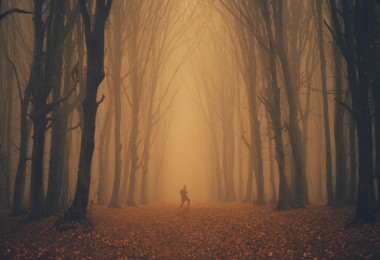Many of us preach the ‘if you can walk, you can snowshoe’ mantra to anyone who will listen, and we’re right…for the most part.
Compared to skiing or snowboarding, snowshoeing has a lower barrier of entry. This means great things for those of us who want to try something new or want a low-impact winter sport, but also creates a natural inclination to be slightly less prepared for what a day of snowshoeing may throw at us. We are quick to forget that an easy activity in optimal conditions is a world apart from the same activity in a challenging environment.
 To ensure your safety on the snow, keep in mind the tips below:
To ensure your safety on the snow, keep in mind the tips below:
Feed for fuel
Many casual snowshoers forget that we can dehydrate just as easily in the winter as we do in the summer, if not more. In combination with the high-calorie burn (up to 1,000 calories an hour) and energy expenditure of snowshoeing, this means nutrition should be an important consideration both before and during an expedition.
The rules here are simple: don’t make your body work too hard. A big lunch or breakfast of starchy grains may seem healthful, but they are actually prone to create mucus and blocked airways which will impair your snowshoeing. Instead, focus on small, easily-digestible meals and whole foods. A fresh juice blend of fruit, vegetables, and leafy greens is a practical way to fuel up before you set off, being packed with vitamins and healthy carbohydrates that will support you during exercise.
You will want to pack well-balanced snacks, sports drinks with electrolytes and emergency food—especially if you snowshoe for over one hour (though you should watch out for drinks with added sugar – you don’t want to “crash” two hours into a trek). Your choices should be easy to consume with gloves or mittens on and should “keep” well if stored in your bag for hours. Classic foods like a PB&J (using gluten-free bread, all-natural peanut butter and a fresh fruit jelly/jam) or a thermos of fresh soup (with lots of veggies and beans) provide sustainable, healthful nutrition.
Be prepared
Altitude sickness, hypothermia, frostbite, slips, and falls, falls through frozen water, and getting lost are all real risks of snowshoeing. With a first aid course, a lot of the fear and vulnerability of these predicaments disappear.
Take the course, then get a pack and fill it. Fill it with ice grips, rope, crampons, an avalanche transceiver, mylar, an LED headlamp, a first aid kit, a knife, matches, tinder, and anything else that has the potential to save you grief. A few extra pounds of cargo is no compromise when it comes to safety.
Be honest about your limitations
Unless you know how to build a snow cave, you are not going to want to head out to snowshoe solo: it is important to recognize such limitations before unknowingly putting yourself at risk.
In the same mindset – as a woman who handles stress and anxiety poorly – I would personally never risk heading into the backcountry without a quality airbag. Have I seen one too many Youtube avalanche videos?
It is easy for the super fit and experienced snowshoer to brush off ski poles as extra weight, but changing weather conditions or unfamiliar terrain can create limitations that make a ski pole the difference between life and death. Modesty is your friend.
Perhaps. But I know it is a limitation for me.
Get familiar with a map and compass.
A global positioning system is a wonderful thing…until you can’t get a signal. Be it cloud cover or a drained battery, too many external factors can come into play to let a GPS be your sole navigational tool. While they certainly make things easier, you will be better off will the ability to navigate the old-school way: map and compass style.
Know Your Snow
While resorts and snowsport training facilities tend to take on the responsibility of ‘knowing the snow’ for their clients, you have to act as your own overprotective snowshoe guide if you are blazing your own trail.
As well as basic snowshoeing techniques, you must always be mindful of higher-risk weather conditions, weak and old snow spots, and the risk of moving water under the ice, planning your excursions appropriately. The very nature of a snowshoe (to help disperse weight on top of soft snow) makes dense and well-consolidated snowpack a hazard.
With the right mindset, safety in the snow becomes second nature and leaves you free to have the time of your life.








thanks for the information